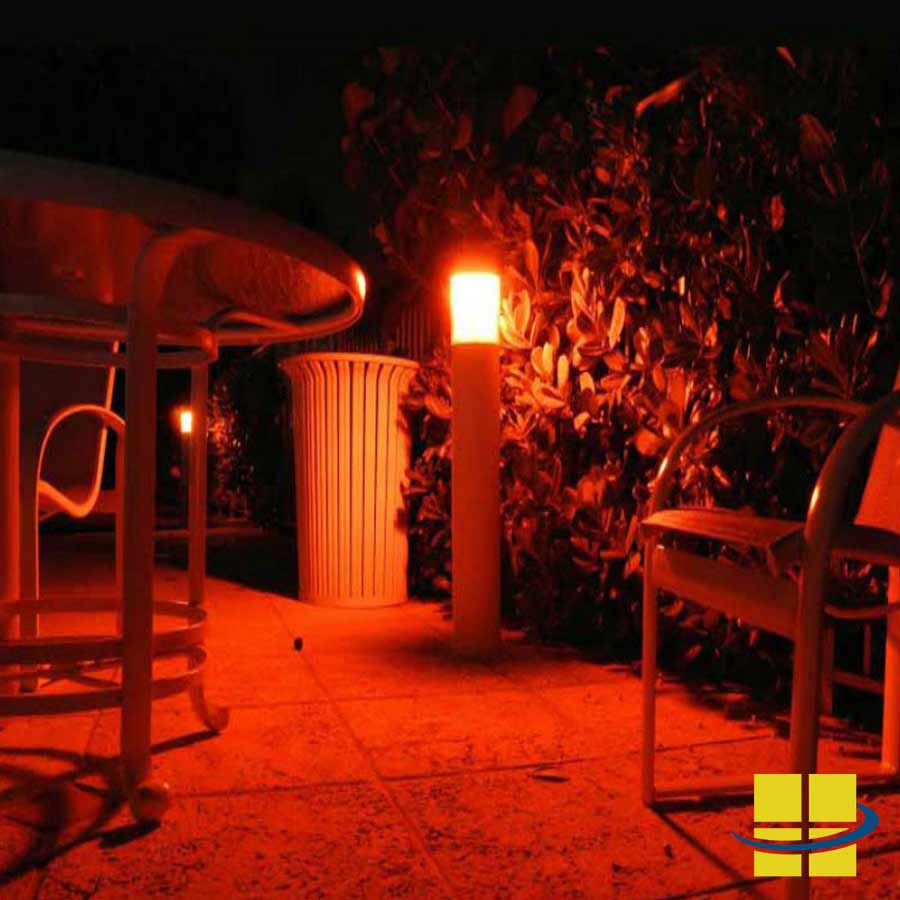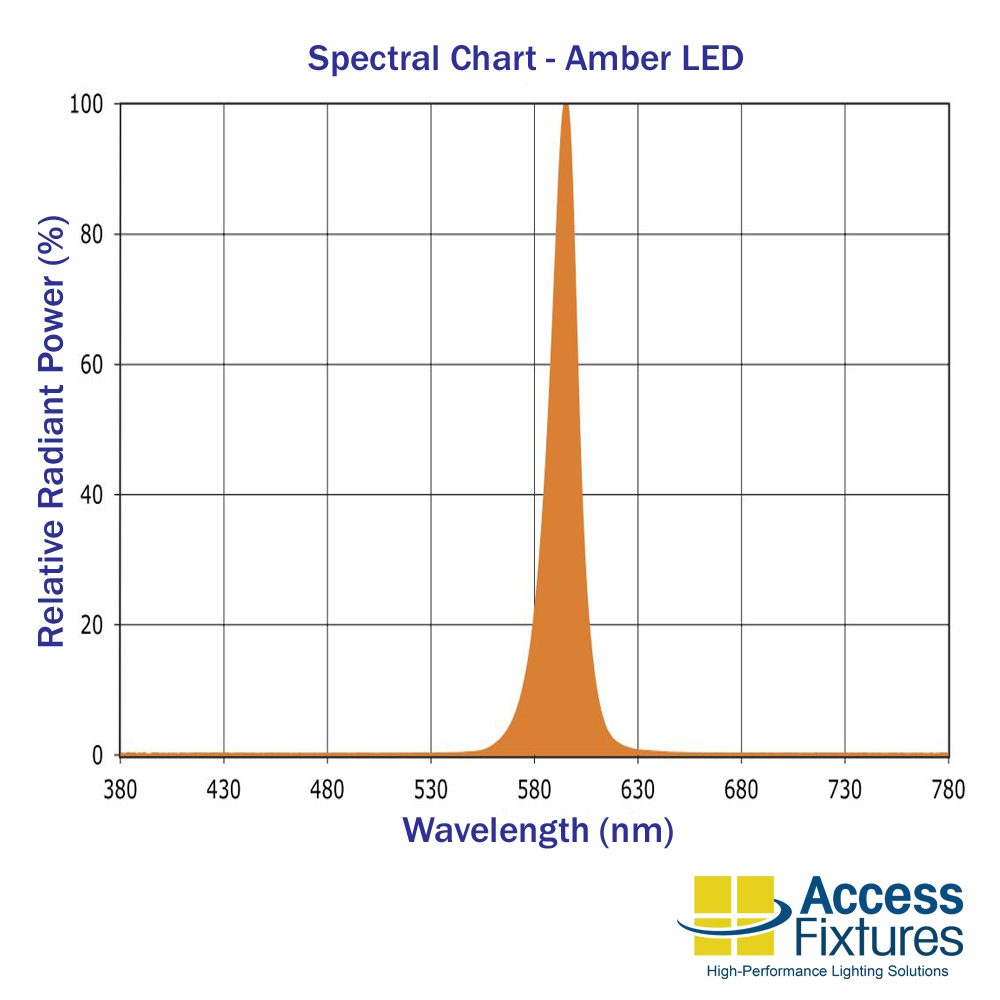Wildlife Lighting – Wildlife Friendly LED Lights
LED wildlife lighting is a specialized solution designed by Access Fixtures to provide illumination sensitive to wildlife’s needs, particularly in environments susceptible to the disruptive impacts of artificial light. These LED fixtures are engineered to emit light at wavelengths that are less likely to interfere with the natural behaviors of wildlife, making them ideal for use in sensitive areas such as coastal regions, roads, walkways, landscape areas, and parking lots. By using wavelengths that are safe for wildlife, these lights help to reduce the negative effects of light pollution, such as disorienting nocturnal animals or interfering with the migratory patterns of birds. The design of these fixtures ensures that they provide essential lighting for human activities while minimizing the ecological footprint, thus supporting a harmonious coexistence between human infrastructure and local wildlife habitats. This approach not only aids in protecting wildlife but also promotes environmental stewardship by reducing unnecessary light spillage and glare, thereby contributing to a darker, more natural nighttime environment.
Key Takeaways
-
-
Wildlife Protection: Access Fixtures’ LED lights emit wavelengths (590–610 nm) that do not attract wildlife, reducing dangers in areas like roadways and commercial spaces.
-
Behavioral Integrity: These lights maintain natural behaviors and cycles by minimizing disruptions to wildlife’s circadian rhythms, crucial for species like sea turtles.
-
Customizable Solutions: Offering a range of energy-efficient and compliant lighting options, Access Fixtures ensures these can be tailored to meet specific local wildlife protection requirements.
-
Why Wildlife Lights?
While outdoor lights are often mandatory for human visibility and safety, artificially manufactured light can be a severe threat to wildlife. For hundreds of years, regular lighting has had a damaging effect on wildlife by disturbing their natural behavior.
Light pollution in the form of standard lighting negatively impacts these animals by essentially turning their nights into days, disrupting their circadian rhythms. These lights can attract wildlife such as turtles and frogs to areas considered harmful, such as roadways and commercial locations.
The light emitted from Access Fixtures wildlife-friendly lighting is almost invisible to these animals; they do not see the light and therefore are not drawn toward buildings, bollards, and parking lots. LED wildlife lighting is available in bollards, wall packs, floods, garage lighters, and more.
A study carried out by the Florida Fish and Wildlife Commission (FWC) Research Institute explains that “sea turtle populations have suffered declines worldwide, and their recovery largely depends upon managing the effects of expanding human populations.”
Whether for sea turtles or other animals, light pollution is one of the easiest problems to solve. The same study also notes a simple way to guarantee effective wildlife lighting: “Keep it long, keep it low, and keep it shielded.”
FWC Guidelines for Wildlife Lighting
The Florida Fish and Wildlife Conservation Commission (FWC) plays a crucial role in protecting the state’s natural resources, including its wildlife. Recognizing the significant threat posed by artificial lighting to species such as sea turtles, the FWC has established specific guidelines for outdoor lighting. These guidelines aim to mitigate the harmful effects of light pollution on wildlife through several strategies, such as ensuring that lights are not directly visible from the beach and are shielded to minimize sky glow and glare. The FWC also recommends using FWC approved long-wavelength lights (greater than 560 nanometers), which are less disruptive to wildlife. Following these guidelines helps preserve Florida’s diverse ecosystems while allowing for safe human activities.
LED Wildlife Light Components
These LED wildlife-friendly lights are classified by the color of their light, but unlike typical LED lamps, these fixtures do not use Kelvin temperatures. In place of Kelvin temperature options, the lights are set to a specific wavelength of 590 nanometers.
This range is a critical element in wildlife-friendly lighting because it is not visible to animals. Though there is no direct substitute for a naturally dark environment, these fixtures reduce light pollution in areas where excessive artificial lighting can harm ecosystems.
Many animals use the presence or absence of natural light (often the moon) as a reference for their movement. For instance, when baby turtles hatch on the beach, their instincts tell them to follow the white light of the moon back to the ocean.
If a housing development has white LED lights in its parking lot, the turtle hatchlings may head toward it instead of the ocean. With wildlife and turtle-friendly lights from Access Fixtures, the harmful pollution effects on these animals can be lessened.
Solar Wildlife LED Lights
An innovative advancement in wildlife-friendly lighting solutions is the integration of solar technology with LED lights designed specifically for wildlife. Solar wildlife LED lights harness solar energy to power fixtures, reducing dependence on grid electricity and lowering the environmental footprint. These lights are equipped with LEDs that emit light at wavelengths that are less visible or completely invisible to many wildlife species, including sea turtles and migratory birds.
Solar-powered LED lights are particularly beneficial in remote or environmentally sensitive areas where installing traditional lighting infrastructure is challenging or could cause significant disruption. Additionally, they offer a sustainable and cost-effective solution for long-term lighting needs, requiring little maintenance and no electrical costs after installation. This makes them an ideal choice for coastal areas, wildlife reserves, and national parks, where preserving the natural habitat is as important as providing necessary illumination.
Click to learn about Commercial Bollard Lights for Wildlife-Friendly LED Lighting Applications
Speak to an Access Fixtures Lighting Specialist
Access Fixtures has the right wildlife-friendly fixtures to illuminate your property and protect nearby wildlife suitably.
All wildlife-friendly fixtures available at Access Fixtures are energy-efficient and long-lasting, with minimal maintenance required. It is important to check with local ordinances to identify any species that may be affected by light and the nanometer of light required.
If a different nanometer of light (besides 590–610 nm) is required by local ordinances, we can still help by providing a custom solution. For all your lighting questions, talk with an Access Fixtures lighting specialist at 800-468-9925.
Conclusion
Access Fixtures’ wildlife-friendly lighting solutions are vital to environmental conservation and animal protection. By integrating these specially designed LED fixtures, property owners can enhance safety for humans while safeguarding our natural wildlife. Ensuring that lighting is appropriate for the local wildlife complies with environmental standards and contributes to the broader goal of sustainable development.
Frequently Asked Questions
What is wildlife-friendly lighting? Wildlife-friendly lighting refers to lighting solutions specifically designed to minimize disruption to natural wildlife behaviors caused by artificial light.
Why is 590 nanometers important for wildlife lighting? This wavelength is less likely to be perceived by wildlife, helping to prevent disorientation and attraction to human-populated areas.
How does turtle approved wildlife lighting benefit sea turtles? By reducing the misguidance caused by artificial light, wildlife lamps help sea turtle hatchlings follow their instincts toward the ocean, enhancing their survival rates.
Can I get custom wildlife lighting solutions if required by local ordinances? Yes, Access Fixtures offers custom solutions tailored to meet specific local wildlife lighting requirements, including different wavelengths.
Who should I contact for more information on installing wildlife lights? You can speak with an Access Fixtures lighting specialist by calling 800-468-9925 for personalized advice and solutions.



